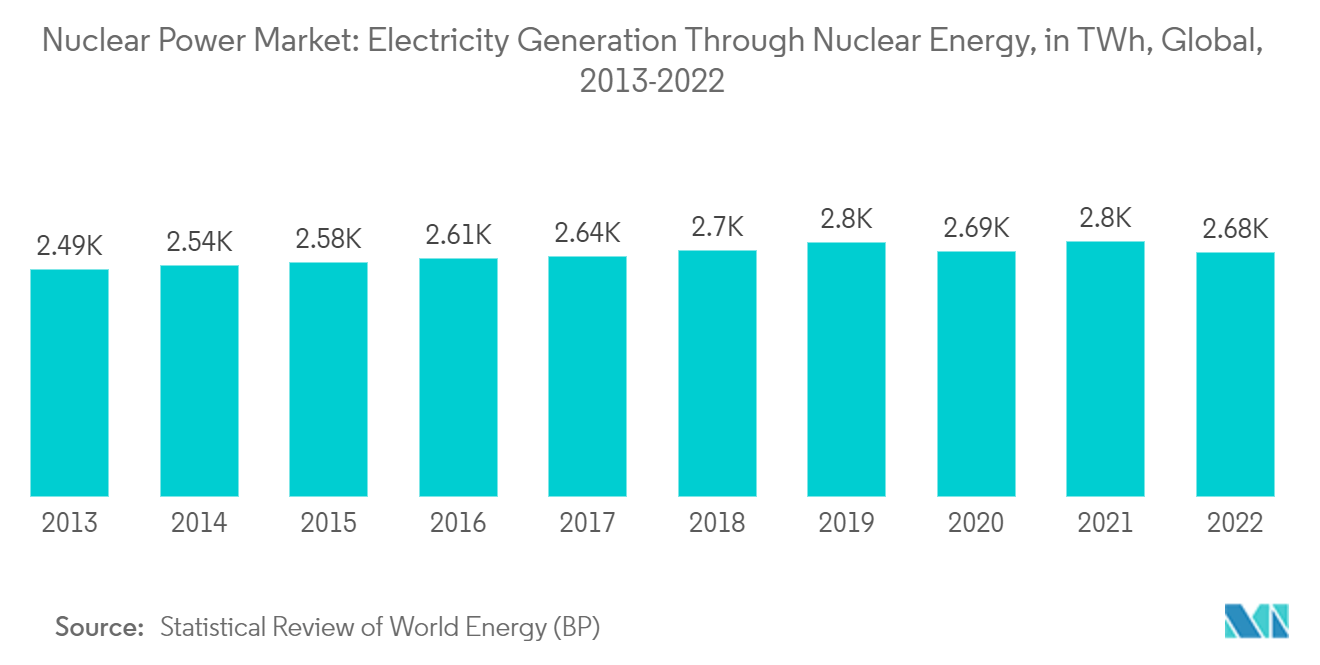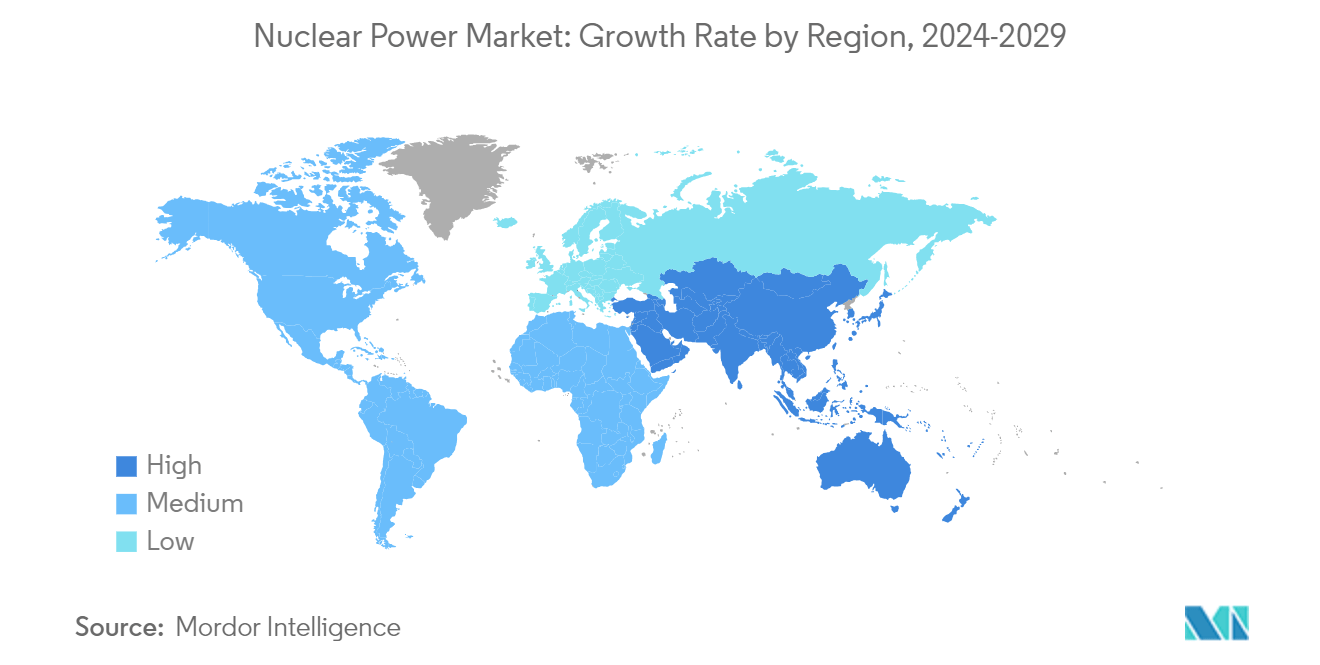Market Trends of Nuclear Power Industry
Energy Segment Expected to Dominate the Market
- Nuclear energy is released from the nucleus or the core of an atom of protons and neutrons. Nuclear energy can be produced either in nuclear fission (when the nuclei of atoms split into several parts) or by fusion (when nuclei fuse). In today's world, nuclear fission produces electricity, while nuclear fusion technology produces power in the research and development (R&D) phase. As of 2022, the global nuclear power generation was about 2,679 TWh compared to around 2,802 TWh in 2021.
- Nuclear power plants can operate continuously for extended periods, providing a consistent supply of electricity, which is crucial in meeting the increasing energy demands of industrialized and developing nations.
- Furthermore, the energy segment contributes significantly to global efforts to mitigate climate change. Nuclear power generates virtually no greenhouse gas emissions during operation, making it a vital tool for reducing carbon dioxide and other harmful atmospheric pollutants.
- According to the Statistical Review of World Energy in 2022, the total electricity generated through nuclear energy was down by almost 4.4% compared to 2021 but recorded an annual growth rate of almost 1% between 2013 and 2022.
- Moreover, with the upcoming nuclear energy power plant projects, the generation capacity is expected to increase during the forecast period. For instance, in April 2023, according to the Atomic Energy Ministry, the Indian government granted authorization and financial approval for establishing ten nuclear reactors in five different states throughout India.
- With a capacity of 700 MW each, these reactors will be indigenous pressurized heavy water reactors constructed in fleet mode. The states where these reactors are scheduled to be set up include Karnataka, Haryana, Madhya Pradesh, and Rajasthan.
- Moreover, India entered the second stage of the country’s three-stage nuclear program. In March 2024, the country commenced one of its first indigenous fast-breeder reactors (500 Mwe) in Kalpakkam, around 70 km from Chennai.
- Therefore, the energy segment is expected to dominate the nuclear power market during the forecast period due to the abovementioned points.

Asia-Pacific Expected to Witness Significant Growth
- In contrast to North America and Europe, where growth in nuclear electricity generating capacity has been limited for many years, several countries in Asia-Pacific are planning and building new nuclear power plants to meet their increasing demand for clean electricity.
- For instance, China focuses on innovation-driven growth, low-carbon development, integrating urban and rural areas with deeper social inclusion, and population aging. The 14th Five-Year Plan highlights high-quality green development, emphasizing innovation as the basis for modern development. By capitalizing on the accomplishments of the 13th Plan, the country intends to reduce the economy's carbon intensity and peak carbon dioxide emissions by 2030.
- Further, according to a draft of the 14th Five-Year Plan (2021-2025) released in March 2021, the government intends to reach 70 GW of nuclear capacity by the end of 2025.
- Furthermore, China's National Energy Administration (NEA) is examining the possibility of increasing the ambition of the country's clean energy programs this decade. The NEA proposes that China obtain 40% of its electricity from nuclear and renewable sources by 2030 and set its nuclear capacity target to 120-150 GW by 2030.
- The Indian government is dedicated to growing its nuclear power generation capacity to meet the increasing electricity demand in the country. According to the Indian government, the country's nuclear capacity is expected to reach about 22.5 GW by 2031.
- As per the Central Electricity Authority (CEA), India had 7.48 GW of nuclear power plants in India till January 2024, with 23 nuclear reactors and seven reactors with a combined capacity of 5,398 MWe under the construction stage.
- According to the Institute for Sustainable Energy Policies (ISEP), electricity generation initially dropped to zero for nuclear power in 2014 but witnessed a resurgence, accounting for 6.5% of electricity generation in 2019. However, it decreased to 4.3% in 2020, increased to 5.9% in 2021, and then declined again to 4.8% in 2022.
- Therefore, owing to the above factors, Asia-Pacific is expected to witness significant market growth during the forecast period.



